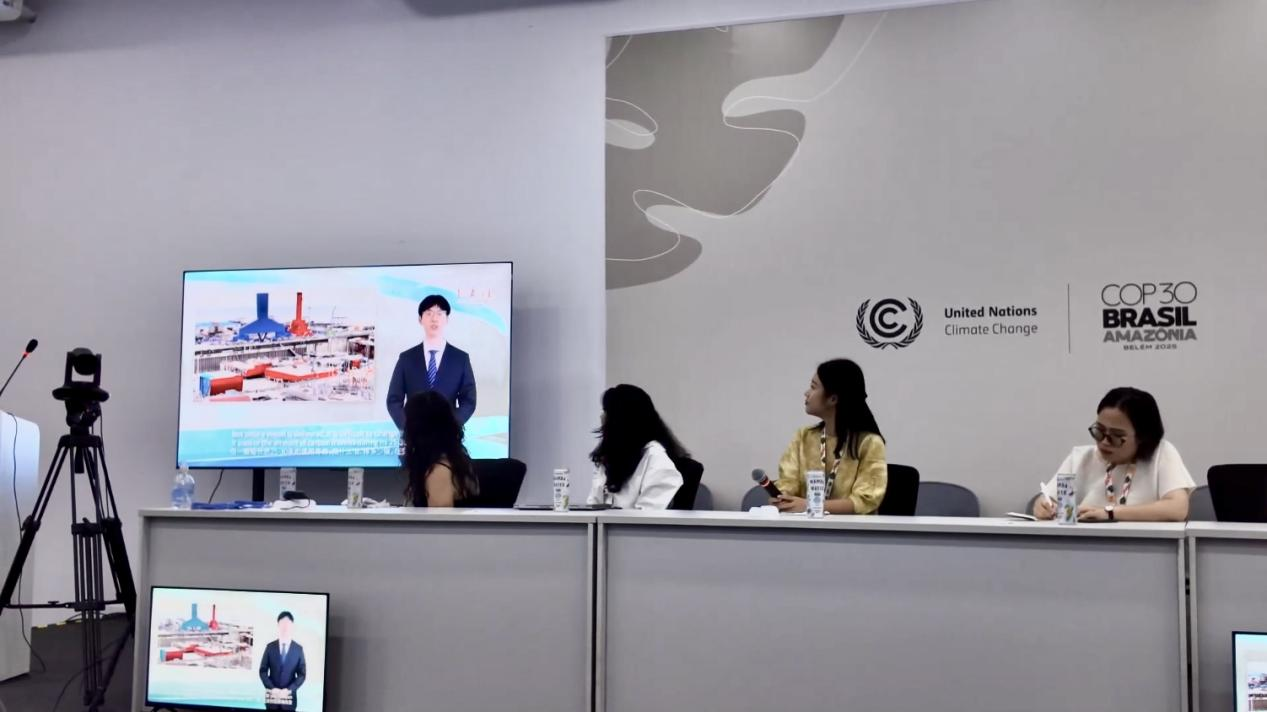A New Era of Low-carbon Offshore Shipbuilding
At a side event on "Green Trade and Just Transition" hosted by the China Environmental Protection Foundation and the China Environmental Federation at the COP30 Blue Zone in Belem, Brazil, Chinese and international environmental groups, companies, research institutions and youth delegates discussed pathways for greener trade and fair industrial transitions on November 18.
The State Grid Jiangsu Nantong Power Supply Company outlined a practical "key" for driving low-carbon transformation across marine engineering and shipbuilding. Using China COSCO Shipping as a pilot, the company applied full-process carbon management and targeted measures across four high-energy shipyard stages — welding, painting, final assembly and new-ship load testing — and combined technical, digital and financial levers to create a near-zero-carbon factory model.
Key technical measures and results
- Welding: Replaced traditional ceramic-plate heating with electromagnetic induction heating and paired the process with rooftop photovoltaic power, boosting heating efficiency by 50 percent and cutting electricity use in welding by 60 percent.
- Painting: Replaced outdated dehumidifiers that accounted for about 70 percent of workshop consumption and installed smart temperature-control systems, reducing workshop energy use by 30 percent.
- Final assembly: Upgraded 15-year-old air compressors to energy-efficient models with intelligent pressure control, reducing compressor electricity consumption by 40 percent.
- New-ship load testing: Replaced diesel generators with shore power to avoid conversion losses and improve overall energy utilization.

Digital and commercial innovations
A digital energy-efficiency management platform using AI provides scheduling and tariff recommendations, helping the yard shift heavy electricity use to low-price periods, select cost-effective billing options and optimize whole-plant power allocation. The approach moves operations from "use, then calculate" to "calculate, then use."
The company also supports applications for government green subsidies and policy incentives, lowering retrofit costs.
Impact and recognition
The pilot at the COSCO shipyard delivered annual cost reductions and additional revenues exceeding 22 million RMB, with an investment payback period of about 4.2 years.
Annual CO2 savings are roughly 4,500 tonnes, along with reduced diesel and natural gas consumption; the site has achieved 100 percent green power coverage and averages under one hour of power interruption per year. The CO2 reductions are equivalent to the carbon sequestration of about 2.9 million fir trees.
In addition, the project spurred upgrades at 12 supply chain firms, attracting interest from over 100 companies. It offers a replicable pathway for shipyards worldwide, helping to usher in a new era of low-carbon marine engineering and strengthening the role of green trade in just industrial transition.







